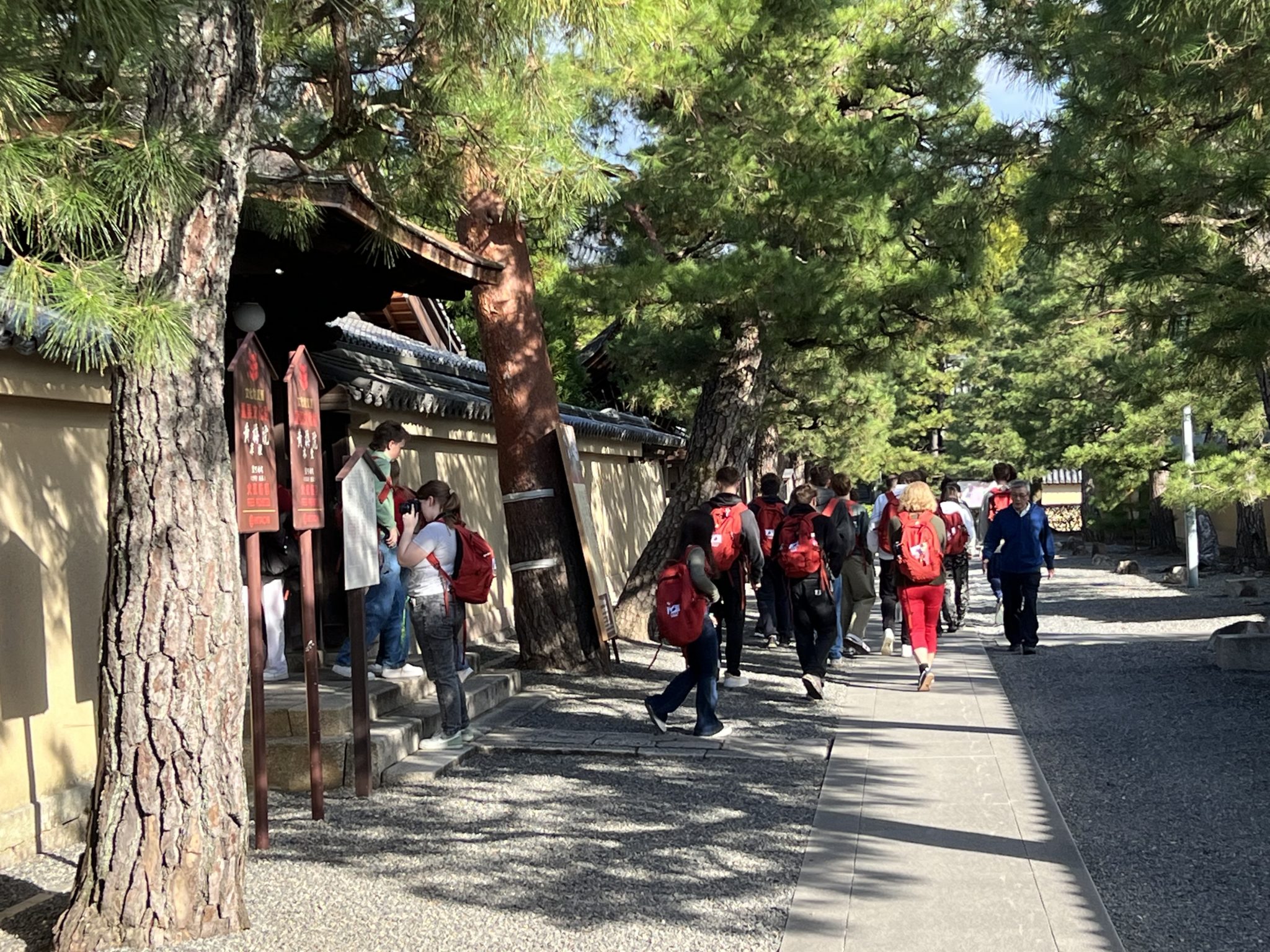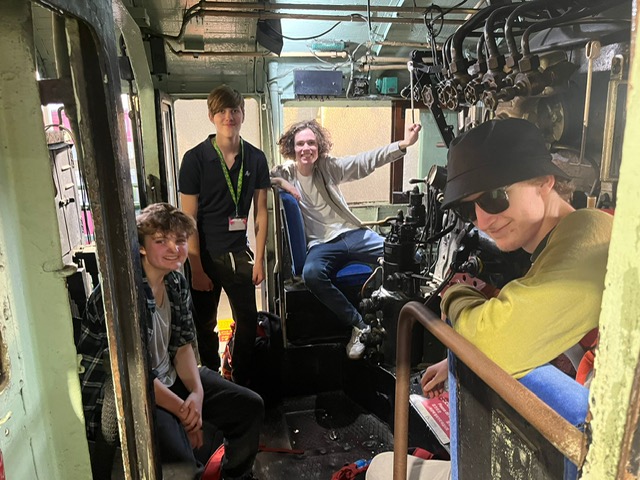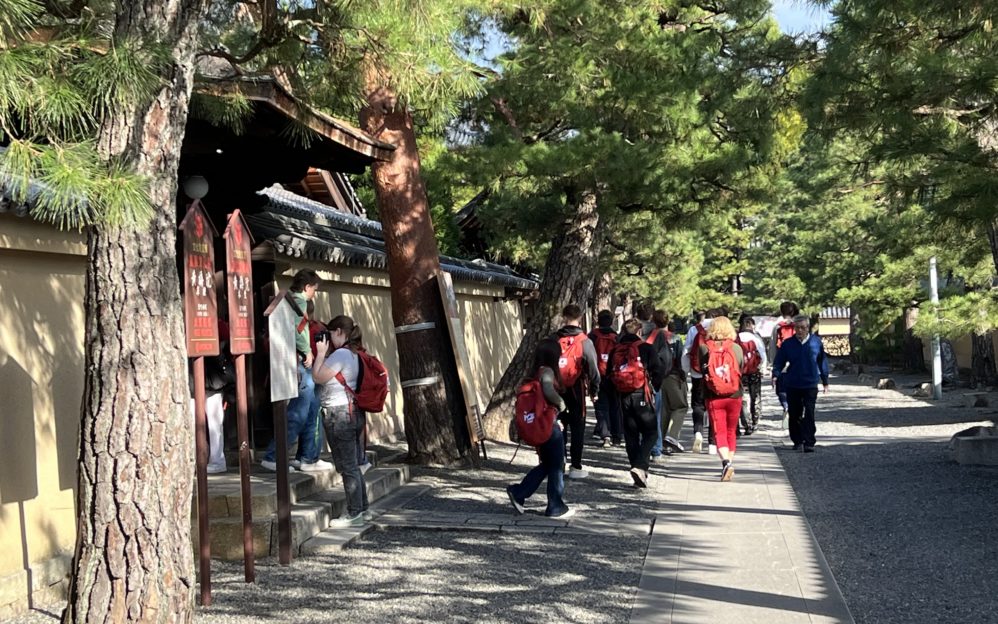
St Edmund's
Final Day
Four stunning cracks of a bamboo stick across Mrs Burton’s shoulders resounded through the latticed wooden chambers of the Daisen-in Temple. The profound silence – a fixture of the five hundred-year-old building – was disturbed only for a moment. The rest of the St Eds Tour looked on in horror as she straightened from a prone position; not a sound was heard in the mediation room, the adjoining passages or the Zen gardens that encircled us. “Don’t do that,” she splutter-whispered.
The high priest of the renowned working Zen-Buddhist temple stepped back and ported the flat bamboo rod.
“You see,” said our guide and translator, a female monk, “the hit is very refreshing.”
Mrs Burton did not look refreshed.
It was the last morning of our tour of Japan, and the St Edmunds team were getting ready for a class in meditation to be given by the masters of the art. The temple was founded in 1508 by Kogaku-Zenji, one of the most famous Zen abbots who was credited with establishing Buddhism in Japan. The beautiful collection of rooms, with sliding wall panels and raked gravel gardens, lies at the heart of a wider network of shrines in the northern part of Kyoto.
The bus from the hotel had been packed with early morning commuters, so it was a relief to tip out into cool walkways and green spaces of the fascinating complex, shaded by Japanese Black Pine trees and tended by two or three aged gardeners who were mindfully hunting rogue shoots of grass or clipping a leaf or maybe two leaves from the immaculate hedges. Every surface of the labyrinth of paths and portals that led us to the sanctum of the Daisen-in Temple was swept and ordered.
As we prepared ourselves, sitting cross-legged on the floor of the mediation room, the monk asked for a volunteer. Mrs Burton, who spotted what was about to happen, was quick to put up her hand. The ‘hit’ is intended to ‘reset you’ in your meditation, said the monk. ‘If you begin to feel sleepy or a bit stiff, put your hands together and bow forwards. We will come to you and hit you on the back. Be careful not to move, it could be dangerous.’
She recommended that we should all request a beating.
For those who wish to know, the posture for meditation as practiced in that very room for five centuries, was as follows. To best clear the mind of all thought, it is necessary to sit with a straight back and your legs crossed in a full-lotus position (if you can manage it); the hands are turned palm up, one laid on top of the other and then the thumbs brought in to make an ‘O’ shape; the O shape is then centred over the belly button. Without bending your head, look at a point on the floor about a metre and a half directly ahead. The only action is to breathe, in and out to a count of ten. And so we were ready to begin.
As our guide’s footsteps died away down the passage, we were left in utter quiet with the priest. From the corner of my eye, I could see that all the St Eds crew were holding the pose. Even Seti and Sophie, the least accustomed to long bouts of stillness and quiet, were absolutely locked in for this one: the place was as ‘brisk as the tomb’. I picked out a fleck on carpet and tried to do as I was told. That was when the priest began his patrol.
The ‘hit’, when taken at the right moment, is indeed a refreshment. To request pain, feels odd, even masochistic, but in fact there is tenderness in the way the flat of the bat is placed gently between the shoulder blades prior to the blow; it steadies and and reassures, even compassion is transmitted. Then come two quick strikes, with force, on the right shoulder and two on the left. It does hurt, but the adrenaline purges the stiffness and refocuses the attention. To sit up afterwards, is to feel renewed.
The experience felt like a distillation of the Japanese way of life. Some visitors to this endlessly surprising country might find its cleanliness and order off putting. Others might find the stringency with which the Japanese operate in everyday life… refreshing. You begin to realise that the lack of bins on the streets is not a measure to prevent littering, it is because, collectively, the Japanese people don’t drop litter. It is interesting to see how the maintenance of order and cleanliness is done by the older generations: the many traffic wardens and city gardeners and street cleaners are in their later years. These are the people who have grown up since the Second World War in the long era of official pacifism, when the country refocused its energies from imperial power projection to reconstruction and going to work on itself.
After the meditation, we toured the temple apartments and the “dry” garden, which is effectively a miniature model of a river. The gravel lines represent flowing water and the journey of life. The river ‘rises’ at one corner of the building and then forks into two streams that run around the building to meet in the ‘ocean’ on the other side. Back inside, our guide asked us to settle once more on the carpeted floor and then told us about the Zen teachings that decorated the walls and her life in the temple. “We cannot control the past or the future,” she said. “All we have is the present, this encounter when we meet. This is what we must concentrate on.” The message was not lost on the St Eds team. We all knelt around our guide and listened as she smiled and laughed winningly. Then she invited us all to tea.
The afternoon was spent at yet another temple, perhaps the most famous of all: the Golden Temple. This is a fantasy in gold leaf floating on an ornamental lake; the scene is so reminiscent of the pictures on biscuit tins from the 1970s that it is not difficult to imagine a giant hand reaching down from the sky to pluck off the lid and rummage for a cinnamon wafer. The students took hundreds, probably thousands, of pictures, so please ask to see them. I even managed to persuade Mr Kincaid to pose for a joint selfie (he’s so bashful.)
As the clock ticked down to our farewell supper, Henry reminded us about the proximity of the Kyoto Railway Museum. A first glance at our watches suggested there would not be time, but Mrs Burton insisted there would and she made it happen. Again, please see the pictures for evidence of Henry’s delight.
Supper was followed by a quick trip up the Kyoto tower and then the day and the adventure was done.
Congratulations and thanks to the all the students for their interest, manners and for being excellent company on this most successful of school trips. Special thanks are due to Mr Kincaid and Mrs Burton for setting it up. There is just one more thing to say, which all on the tour would endorse, if you haven’t been, go to Japan.


